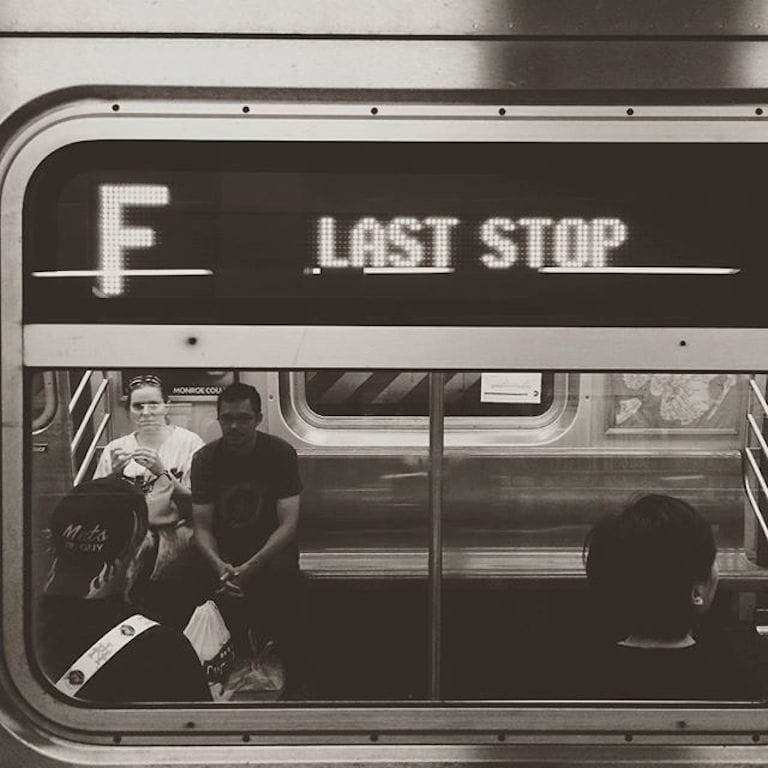Tale Of Two Rails: Here’s What You Need To Know About The F Train Express


News that the long-sought-after F express train would be returning to Brooklyn almost immediately caused a row among lawmakers representing different parts of the borough. Elected Officials in southern Brooklyn — whose constituents will benefit from faster commutes — hailed the MTA’s announcement as long overdue. Meanwhile, the proposal drew scorn from a group of representatives, led by Councilman Brad Lander (whose district includes Cobble Hill, Carroll Gardens, Park Slope, & Windsor Terrace and Kensington), because it would reduce local service and increase wait times in their districts.
Borough President Eric Adams, who in the past joined southern Brooklyn officials calling for F express service, said the MTA’s proposal “seeks to pit Brooklynite against Brooklynite in a fight for quality transportation.”
“It is a victory that grassroots advocacy has led to a day in which express service is a real consideration for F train riders once again, but that victory must be a shared one for all Brooklynites,” he said in a statement.
So where will the new F express train — expected to make its debut in the Fall of 2017 — actually stop? And why does it appear to be tearing Brooklyn apart? The MTA has released a comprehensive feasibility study of the plan.
Here are some of the important takeaways:
The F express train will exclusively benefit southern Brooklyn residents.
The proposed F express train is meant to reduce travel times for southern Brooklyn residents, who experience some of the longest commutes in the city The MTA estimates that express service will shave an average of 3.4 minutes off the commute during the morning rush hour. Meanwhile, riders at local stops between Church Avenue and Jay Street-MetroTech, the stretch of the F line that runs express, would likely lose an average of 1.3 minutes during peak morning travel times. The MTA explains that due to limited track capacity, the number of trains on the F line would be split between express and local service — causing longer waits for the local trains.
Here’s a map of the proposed F express service:

The stations bypassed by the F express line service more commuters.
There are significantly fewer riders boarding south of Church Avenue. Between the Coney Island stop and Ditmas Avenue, There are an average of 400 – 500 people boarding per station during the peak morning hour. Meanwhile, five of seven stops north of Church Avenue experience the most traffic on the line. The riders at these stops are the ones who would experience longer waits.

Why can’t the F express train be restored to how it used to run?

The F express train used to go to Kings Highway, 18th Avenue, and Bergen Street, but those stations were slowly phased out and the express train eventually stopped operating in 1987. The Kings Highway station has a third track that would allow for one-way express service. however, the switches needed to route trains to the express line were removed in the 1990s and need to be replaced. The track signals and switches are slated to be modernized in the next capital plan, scheduled to be completed in 2020, meaning an express stop at Kings Highway could be considered in the future. Meanwhile, the lower level of the Bergen Street Station, where an express train could stop, was closed in the 1990s and would require $75 million to restore.
The proposal is likely to cause packed stairwells at some stations
Because service at the stations skipped by the express train will be less frequent, the MTA expects larger “exit surges” during the evening rush hour — leading to crowded stairwells at two of the most heavily trafficked stations: Bergen Street and Carroll Street. The cost of widening the stairs and installing elevators to alleviate the congestions is $10 million at each station. The MTA says these funds are not included in the current Capital Budget.
Why do we have to wait until Fall 2017?
The MTA notes that major renovations are scheduled at stations along the F line starting this summer and continuing through the summer of 2017. To begin F express train service during this time would lead to a decrease in train frequency and reliability. It would also limit express service to peak directions and some of the express trains would end their route at Church Avenue.
There benefits outweigh the costs.
The MTA reports the proposed express train will result in a net travel time benefit of 27,000 minutes during the weekday morning rush hour and 13,000 minutes during the evening rush hour. The report concludes: “While F riders at local stations would experience longer wait times, this service change will help those riders along the train in South Brooklyn with the longest commutes.”



